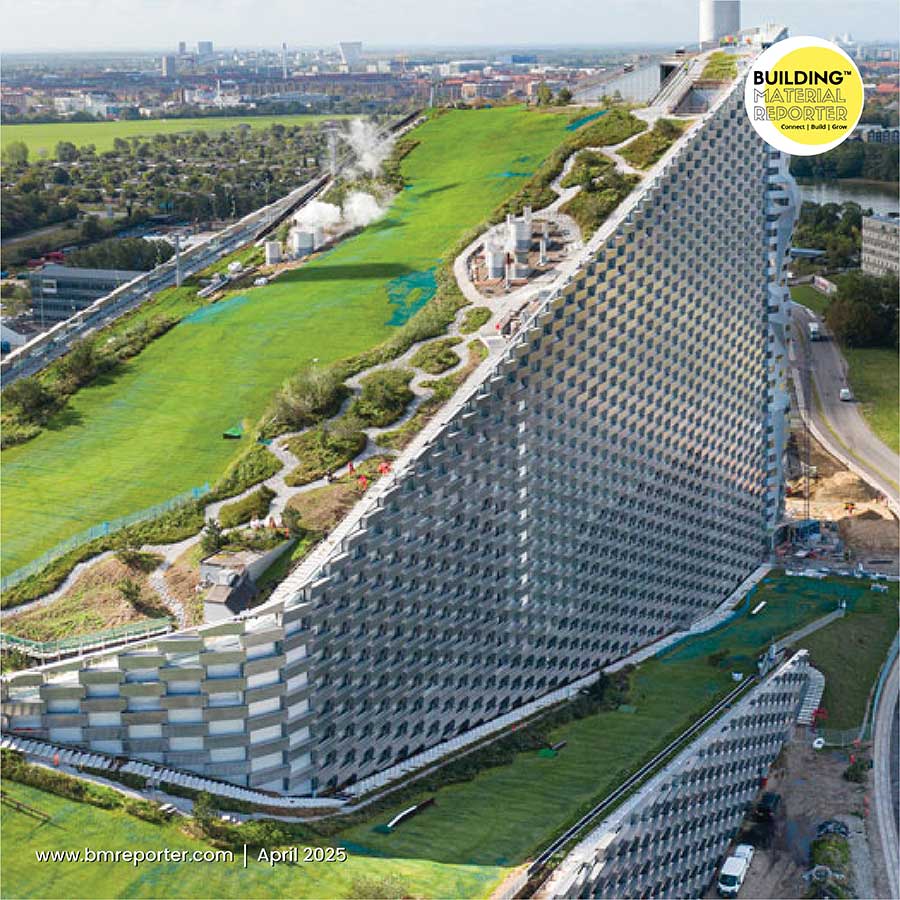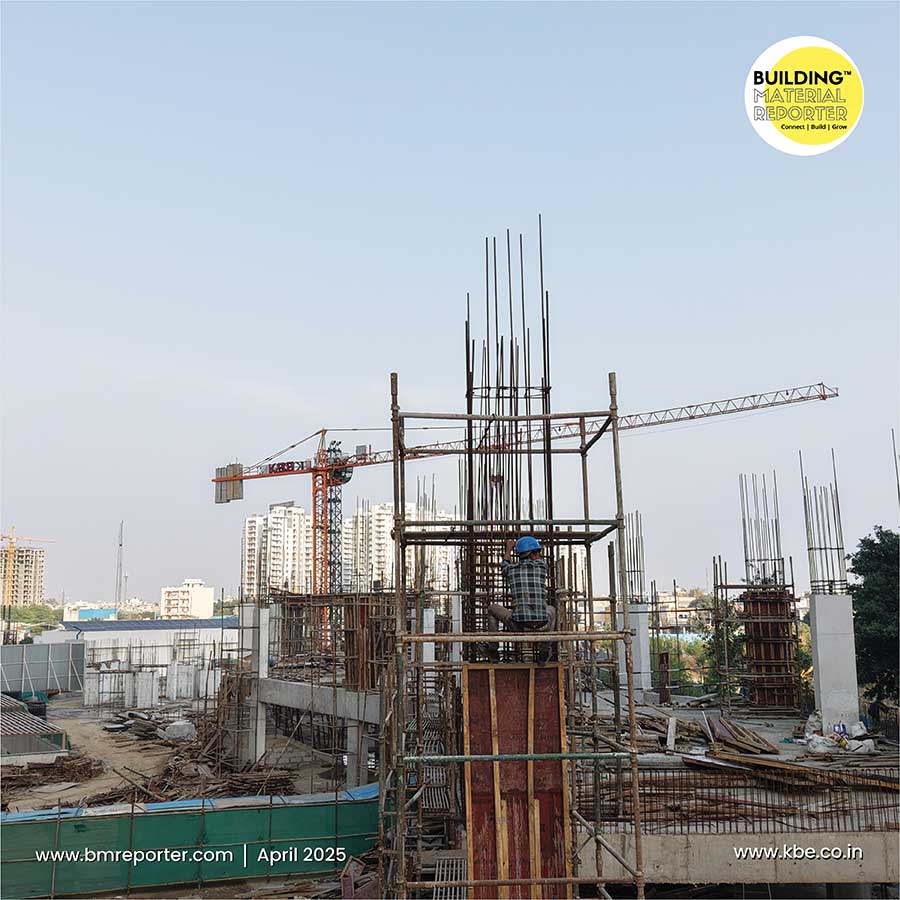Optimizing Residential Plot Development: Best Practices and Strategies
- November 9, 2024
- By: Yukti Kasera
- INFLUENCERS
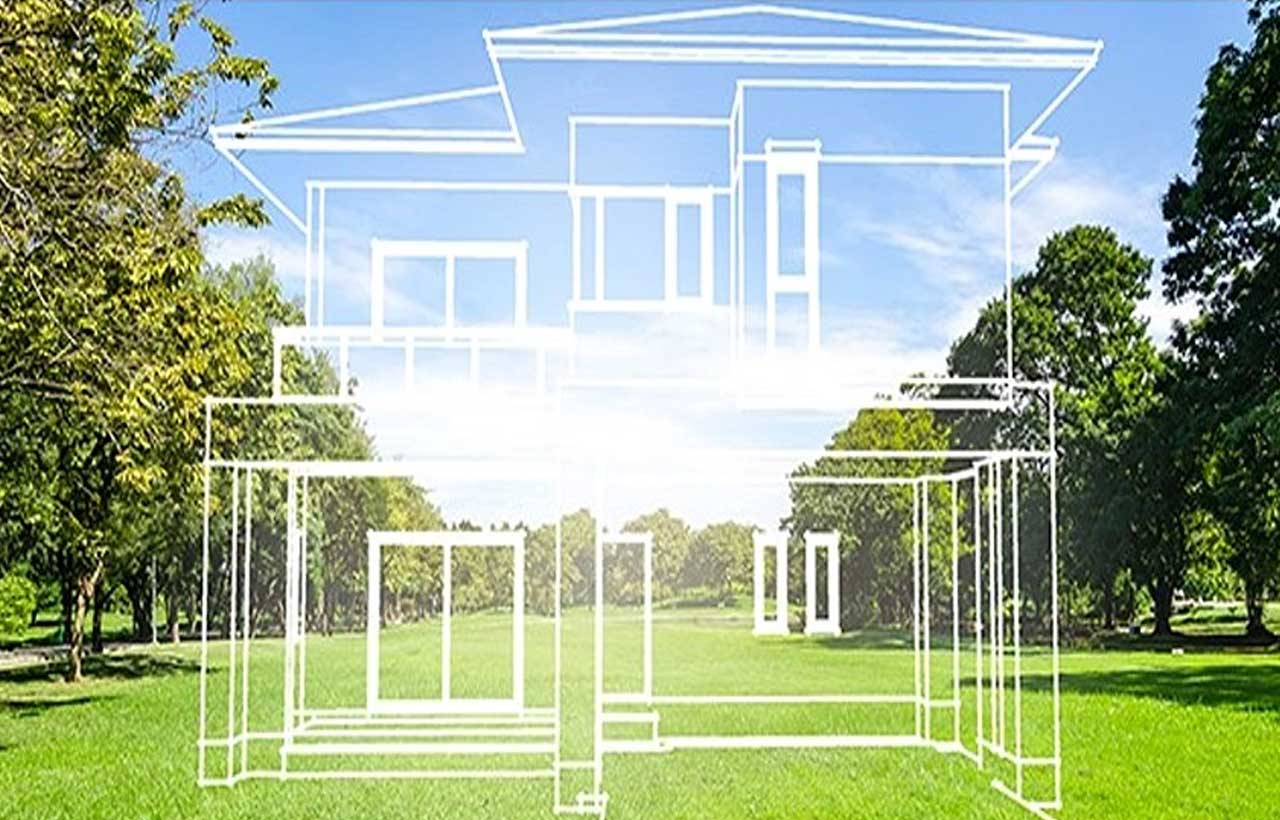 Real Estate has seen a lot of changes all over the years. With the rising concept of sustainability and green environment, the investors and buyers look for real time investments which promise sustainable goals. The decision to buy the land is not an easy task.
Real Estate has seen a lot of changes all over the years. With the rising concept of sustainability and green environment, the investors and buyers look for real time investments which promise sustainable goals. The decision to buy the land is not an easy task.
What is plot development?
With the ever-increasing need of houses, the plot development on the residential land has become extremely vital. From residential real estate development to urban land planning, to even maximizing land concepts as a property owner, you need to know what best practices and tactics will help with the development of residential plots. In this detailed blog post by Building Material Reporter, we are going to explore the things to keep in mind, tried and tested strategies, and some hacks to unlock the maximum value of your plots for the house.
Why is plot development important?
At the heart of executing any successful plot development is knowledge of your land and what it can and cannot do. The development process is influenced by factors such as the existing geography, soil type, utility availability, and land designation. Through rigorous site assessments and research one can find the intrinsic strengths and weaknesses in the plot. Thus, one should know the importance of plot development for optimization and investment.
Understanding Zoning Laws and Regulations
The best residential plot developments start at an understanding of the nuances and limits of the land itself. Topography, soil type, availability of utilities, and zoning laws must all be taken into consideration and will have a significant impact on how a development proceeds. At the central level, Urban Land (Ceiling and Regulation) Act, Real Estate (Regulation and Development) Act (RERA), 2016, National Building Code of India (NBC) and Environmental Protection Act, 1986 are important. Considering the state level, Municipal Corporation Acts and Local Building Bylaws are taken into account.
Key Considerations for Compliance: The important considerations to be taken into account for compliance in terms of residential plot development are keeping the clear track of past 30 years, agricultural land conversion status (if applicable), tax payment history and legal clearances. Amongst environmental compliance, one needs to check forest department clearance, groundwater authority approval and environmental impact assessment (for large developments).
Impact on Property Value: The factors associated with the residential plot development make a significant impact on the property value. Some important points to remember for this include: presence of commercial properties nearby, considering roads, utilities, and civic amenities, checking on nearby architecture, landscape and other developments which can raise the overall value of the space, rapid progress in the area and rising home prices due to desirability.
Site Analysis and Feasibility Study
Site Analysis is one of the primary goals of residential plot development. Achieved through lot layout and design that considers the orientation of buildings, the nature of the setbacks and green spaces areas, among others. Developers that strike the proper balance between density and livability can provide up a community that maximizes the overall land use, while sustaining a terrific lifestyle for residents.
Assessing Plot Potential and Challenges: Assessing the plot potential and constraints of a site and allowing yourself to operate can result in the best possible favors. Some assessments like checking soil composition, flood risk assessment, solar orientation, climatic conditions, ground coverage restrictions and plot shape, statutory laws, floor height restrictions are checked thoroughly. Technical and design challenges like plot problems, groundwater issues, privacy, market changes risks, green features and much more are to be noted.
Topographical and Geotechnical Studies: These two studies are very important to assess the physical characteristics and limitations of the plot. Topographical features like placement of structures, existing landscape, drainage etc play a very important role in making decisions. Geotechnical investigations are much advanced and they study the site’s internal conditions. Understanding soil, excavation process, foundation design, groundwater level and also the seismic activities of the place- all these are integrated in geotechnical studies.
Sustainable Development Practices
Sustainable practices and green building techniques in residential plot development acts as the foundation pillar. It is a kind of holistic configuration that enables the plot developments to have minimal environmental impact, maintain local biodiversity, maximize ventilation and propagate conscious development.
Eco-Friendly Building Solutions: Energy efficiency is a critical component of eco-friendly development, amalgamating both passive and active design solutions. Passive design includes proper building orientation, natural ventilation systems etc. Active systems comprises solar panels, LED lighting systems and adding smart home technology in the homes for energy optimisation. These solutions decrease environmental impact and provide economical growth for residents planning for developments on plots.
Water Conservation Techniques: Water conservation is very important for sustainable development. Rainwater harvesting systems, greywater recycling etc are considered in this conservation. Rainwater management using bioswales, and retention ponds that contribute to the natural water cycle. These solutions not only conserve water, but also lessen the adverse effects on municipal infrastructure, resulting in a more durable and sustainable development.
Design and Layout Planning
Proper design and effective layout planning in residential plot and hub development begins with a complete site study. This study includes sustainability and green design, orientation, wind patterns, vegetation, and neighboring infrastructure to help with layout decisions. Just like we consider LED lighting trends for the site, similarly sun orientation for the plot is important. The careful considerations of local zoning restrictions, building codes, and development controls, which create the framework within which the designs must operate. These characteristics, which might include setbacks, ground coverage limits, and height restrictions, design the fundamental building envelope and have an impact on overall site organization.
Maximizing Space and Aesthetics: The spatial arrangement in any plot should include the positioning of forms and create a harmonious living environment. This includes establishing the best building orientation for natural light and ventilation, and incorporating landscape. The plan includes a balance between practical requirements such as privacy, security, accessibility, and aesthetic appeal, all while preserving efficient circulation patterns. The transitional zones are verandahs, patios, and courtyards which are designed to improve the living experience and add to overall spatial quality.
Incorporating Technology: Integrating technology ensures that high standards are met throughout the construction process in residential plot development. This also includes long-term maintenance requirements and incorporates sustainable techniques to preserve the development's viability and value.
Infrastructure and Utility Planning
Infrastructure and utility design are the foundations of effective residential plot development. They include necessitating comfortable, smart designs and sustainable living conditions. The process begins with a thorough evaluation of available municipal services, site characteristics, and integrated infrastructure strategy.
Ensuring Essential Services and Connectivity: The system design must take into account the essential services like electrical, pressure requirements, CCTV coverage and water quality regulations. Parallel to this, sewage infrastructure necessitates careful planning of collecting networks, treatment facilities, and disposal systems. Designs should consider drainage patterns, retention systems, and sustainable urban drainage solutions to reduce flooding and allow for groundwater recharge. Proper connectivity should be ensured, which should also promise safety and security.
Transport and Accessibility: Transport and Accessibility Planning in Residential Development includes road networking planning regulating traffic flow analysis and speed control measures, vehicle parking with capacity calculation and visitor parking, smart solutions implementation like traffic monitoring, access control and energy management. It should ensure regular maintenance and accessibility which is very important for any efficient plot development.
Financial Planning and Budgeting
This involves assessing, assigning, and managing the expenditures connected with the conversion of land into residential areas. In the first stage it is important to determine the expenses of property acquisition, legal fees, licenses, and any other clearances. Moving on, a comprehensive budget is prepared to fund infrastructure development such as road construction, water and sewer systems, electricity, landscaping, and other utilities. Contingency costs should also be included in the budget.
Cost Management and Funding Options: Cost management and funding choices are critical factors to consider when purchasing a residential plot. This is because they impact the investment's affordability and financial feasibility. Cost management should be taken into account not only for the land costing but also other legal expenses such as taxes, registration fees, legal charges, and utility connection fees. Funding alternatives vary based on the buyer's financial status.
Funding Options and Sources: Personal savings, bank loans, and home equity loans are offered based on the land's value or the buyer's creditworthiness. Personal savings, bank loans, and home equity loans are traditional funding alternatives, with lenders offering finance based on the land's value or the buyer's creditworthiness. Some buyers may consider government schemes or financial aid programs. This can provide cheaper interest rates or incentives to first-time landowners or developers. Alternatively, if a large part of the plot is purchased, then joint ventures or partnerships with developers or investors can give additional funding. An overall evaluation of finance possibilities, as well as a clear cost management plan, guarantee that the buyer can make a sound decision.
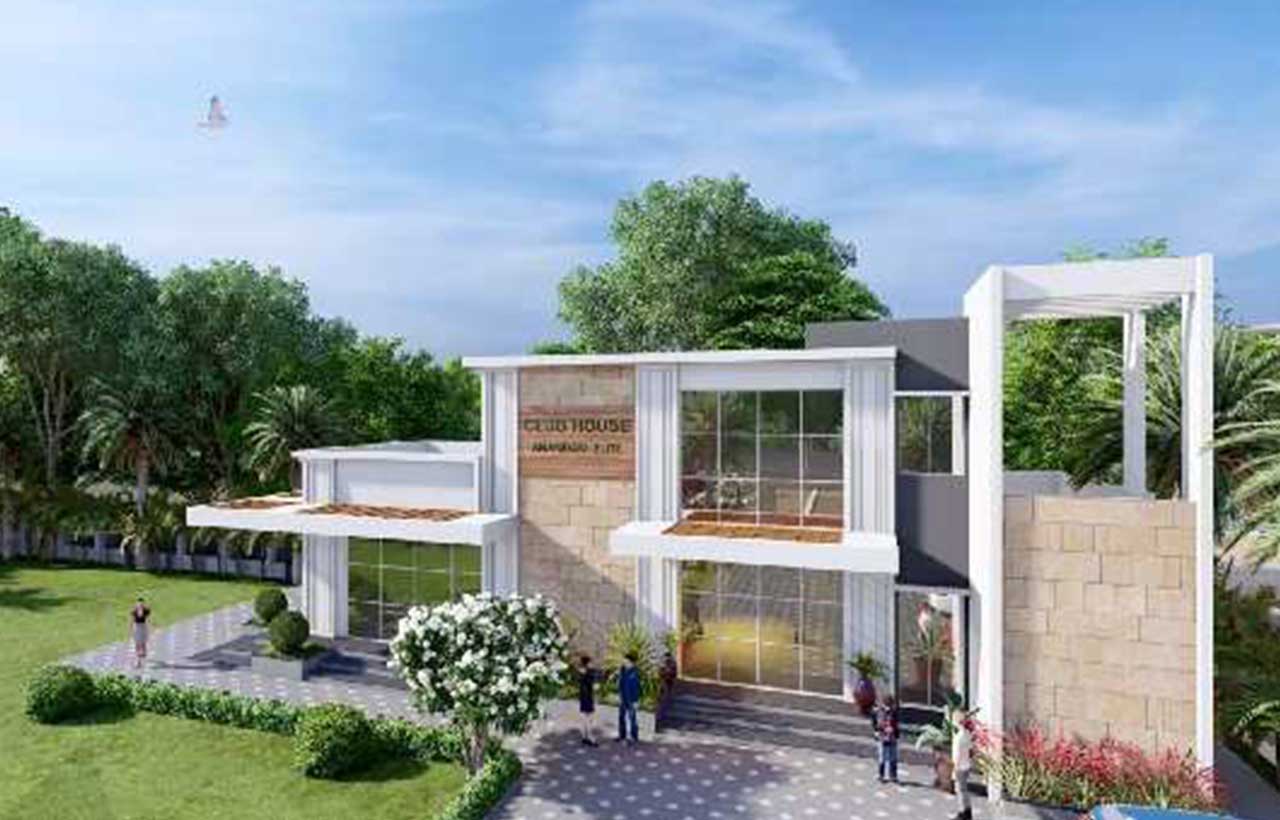
Engaging with Stakeholders
Engagement with stakeholders is an important part of purchasing and developing a residential plot. It guarantees fruitful communication, alignment of interests, and successful project execution. The stakeholders are usually the land seller, governments, real estate agents, legal professionals, financial institutions, and potential investors.
Collaborating with Architects, Engineers, and Contractors: A proper and healthy coordination with architects, engineers, and contractors is an important part of the residential plot development process. The professional hand plays a role in ensuring the project is conceived, planned, and completed properly. The architect creates site layouts, building blueprints, and landscape concepts. Their knowledge guarantees that the design maximizes the plot's potential, and combines sustainable and beautiful components.
Civil engineers evaluate the topography, foundation and infrastructure which includes drainage, roads, and utilities, and make sure that they are constructed correctly as per construction technology norms. Structural engineers ensure safety and stability, and mechanical engineers design the development's internal systems. Contractors oversee the building process, organizing personnel, materials, and equipment to keep projects on schedule and under budget.
Building Trust and Relationships: There is ongoing coordination between all of them to ensure that the vision is carried out as intended, within budget, and on schedule. The teamwork among architects, engineers, and constructors result in a successful development of the desired goals.
Risk Management and Mitigation
Risk management is a vital part of the plot development process. It includes a variety of elements such as legal issues, environmental concerns, and financial uncertainty. This can be a barrier for plot development and in creating stunning structures. Managing these risks early in the planning process can help to reduce future setbacks and assure consistency in the development trajectory.
Types of Zoning: Residential zoning for development is the legal mechanism by which towns and municipalities govern land usage and development. Zoning is necessary for regulating land use and preventing urban sprawl. It involves the assignment of specific functions, enabling orderly development, environmental protection, and community safety. It includes R1, R2, R3, RM (mixed zoning), R4 for high rise apartments and so on.
Identifying and Addressing Potential Issues: Firstly, it is important to review the local zoning laws to see what may and cannot be built on the site. If the plot is not zoned for residential use, then the approval can be time-consuming and uncertain for the same, it is important to verify setbacks. Even within residential zoning, there may be restrictions on setbacks, building height, and the number of units permitted.
Project Management Strategies
A residential plot development project's success depends on effective project management practices. These strategies help in managing the resources, deadlines, budgets, and risks, ensuring that the development process runs smoothly from inception to conclusion.
Effective Execution and Oversight: The successful implementation and development of the plot depend on effective execution and oversight. From transforming the vision into a tangible reality to ensuring that the project stays on track with its goals, scope, timeline, and budget. The strong execution and oversight will make the difference between a successful development and one marred by delays, budget overruns, or quality issues.
Team Collaboration & Time Management: Team collaboration is crucial for the successful completion of residential plot development projects. This requires multiple disciplines and stakeholders working together to achieve a common goal. To ensure that all parties are on the same page, the project should be ensured to remain on track in terms of scheduling, quality, and money. With a coordinated time management and completion of tasks delegated, the development procedure can be achieved easily and effectively. Time management should be ensured by regular check of tasks completion and allocation of duties as per the schedule.
Market Trends and Demand Analysis
It has emerged as a significant market in the last few decades and has seen exponential growth. Housing and residential requirements in Tier 1 and Tier 2 cities in India have increased by 30% in the last decade, mainly due to the growth in urban population in the country. Actually, from time to time there are reports that among Indian citizens they are becoming more willing to own their own land plots, separate from what they would be living in apartments. To adapt to a reality where plot development in developable lands is restricted to areas that are within a large urban region, residential plots have been brought out of the urbanized zones thus resulting in increased residential plot prices in urban areas. On plots for housing, home buyers are inclined to purchase houses in areas with high availability of recreational amenities and the green spaces. Investors include investors and real estate firms, which are actively purchasing residential plot sites in new areas with the intention of earning returns for capital appreciation and possibly developing additional property.
Aligning Development with Market Needs: In India, with its fast rising middle class, the percentage of homebuyers with the higher disposable income have also increased, hence the potential for an increase in potential private property owning individuals. Younger generations of Indian people, particularly those living abroad, prefer buying freestanding houses because of lack of interest in the flat formats which enable them to have better living space, personal independence, as well as access to the countryside. More people have been arriving in cities and suburbs as new prospects have been offered in life such as better working conditions, access to amenities etc for which people are now seeking homes in areas that would provide transport with them. The private companies and even the individuals and institutions are buying residential plots in order to take advantage of their respective sectors of the future.
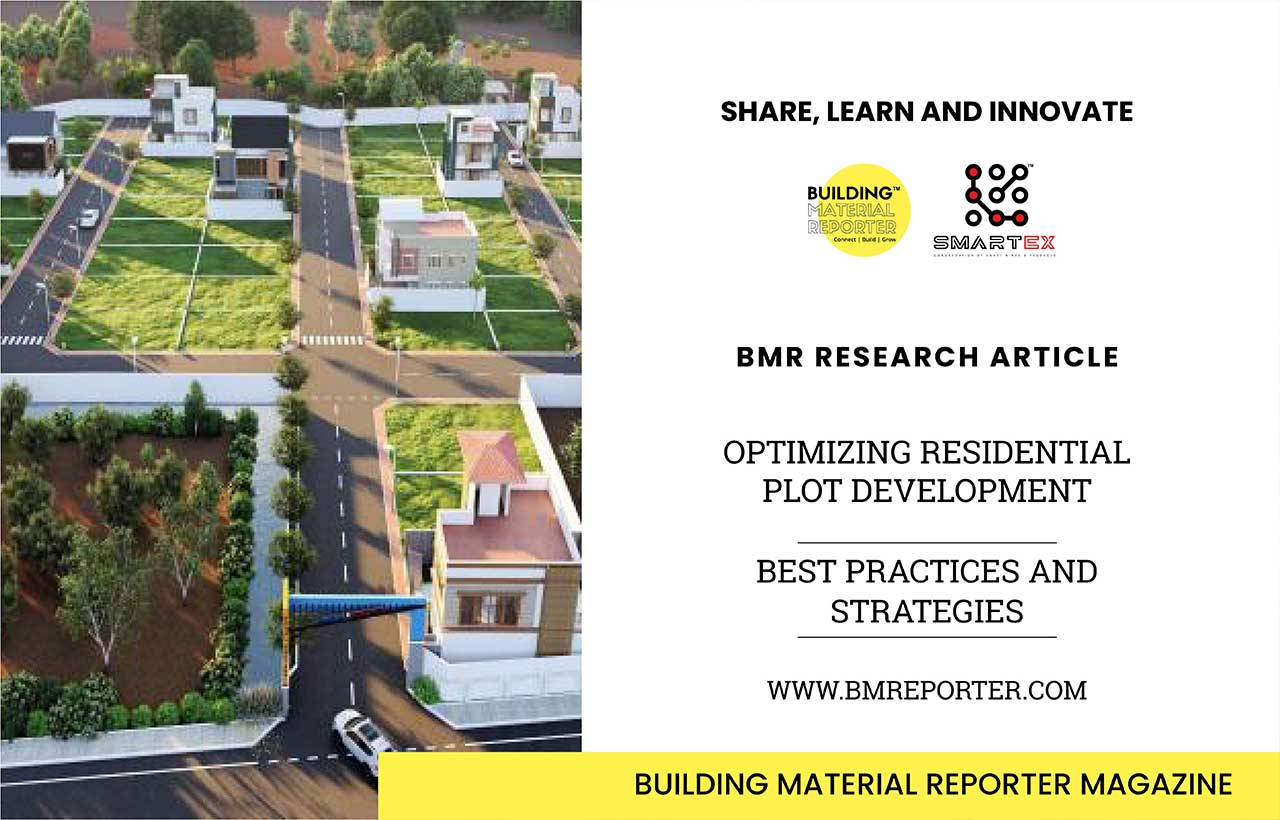 Stay updated on the latest news and insights in home decor, design, architecture, and construction materials with Building Material Reporter.
Stay updated on the latest news and insights in home decor, design, architecture, and construction materials with Building Material Reporter.
Frequently Asked Questions (FAQ’s)
What are the initial steps for developing a residential plot?
Identify a suitable location, evaluate land availability and ownership, and secure the land acquisition through proper due diligence and regulatory approvals. After developing a comprehensive master plan, arrange for necessary infrastructure and utility connections, and secure project financing.
How can I ensure my residential plot development is sustainable?
By including eco-friendly design elements such as energy-efficient buildings, water conservation systems and waste management solutions, residential plots can be made sustainable. This should minimize the development's environmental impact and operating costs.
What are common challenges in residential plot development, and how can they be mitigated?
Some common challenges in residential plot development include limited availability of suitable land, exaggerated by rapid urbanization and restrictive zoning laws Obtaining necessary regulatory approvals and clearances for this from multiple government agencies is crucial for consideration.






